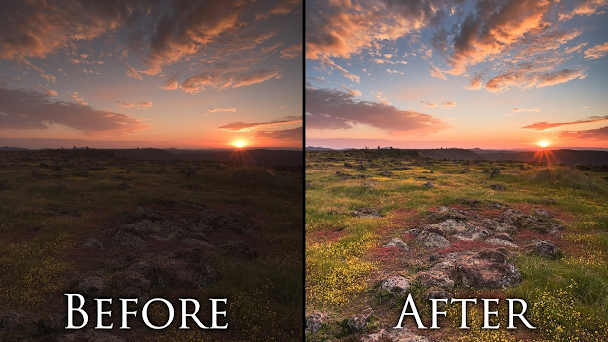Post-Processing: Enhancing Your Photos with Editing Software
Introduction
In this digital age, taking photographs has become easier than ever before. With the advent of smartphones and digital cameras, anyone can capture moments and memories with a simple click. However, capturing a good photo is only the first step. To truly bring out the best in your pictures, post-processing using editing software is essential. Whether you are a professional photographer or a casual enthusiast, learning how to enhance your photos can take your photography skills to the next level.
What is Post-Processing?
Post-processing, also known as photo editing, refers to the art of enhancing and improving digital images using specialized software. It allows photographers to fine-tune their pictures, correct imperfections, and creatively modify the image's overall appearance. With post-processing, you can transform an ordinary shot into a stunning masterpiece.
Benefits of Post-Processing
1. Correcting Exposure and White Balance:
One of the primary benefits of post-processing is the ability to adjust exposure and white balance. Sometimes, photos may appear too dark or too bright due to improper lighting conditions. Editing software enables you to fix these issues and bring out the right amount of brightness, contrast, and color temperature, making your images more visually appealing.
2. Enhancing Colors and Saturation:
Vibrant and well-balanced colors can significantly impact the overall feel of a photo. Post-processing tools allow you to adjust color saturation, hue, and vibrancy, enabling you to create images that evoke specific emotions and moods.
3. Sharpening and Detailing:
In many cases, images might appear slightly soft or lack sharpness, especially after resizing or compression. With post-processing, you can sharpen the details, making your photos appear clearer and more professional.
4. Removing Unwanted Elements:
Post-processing software provides tools like the clone stamp and healing brush, which help you remove distractions or unwanted elements from your images. Whether it's a stray person in the background or a distracting object, you can easily eliminate them and focus on the main subject.
5. Creative Editing:
Beyond basic adjustments, post-processing allows for creative expression. You can experiment with various filters, overlays, and effects to add unique styles to your photos. This creative freedom enables you to develop your artistic vision and make your images stand out.
Choosing the Right Editing Software
There is a wide array of photo editing software available, catering to different skill levels and needs. Here are some popular options:
1. Adobe Photoshop: A professional-grade software with extensive editing capabilities. It offers powerful tools for image manipulation, retouching, and compositing. However, its complexity may be overwhelming for beginners.
2. Adobe Lightroom: Designed for photographers, Lightroom provides a user-friendly interface for organizing and enhancing images. It offers a wide range of editing features and is suitable for both beginners and advanced users.
3. GIMP: An open-source and free alternative to Photoshop, GIMP offers a comprehensive set of tools for photo editing. While it may lack some advanced features, it is an excellent option for those on a budget.
4. Snapseed: Ideal for mobile users, Snapseed is a feature-rich photo editing app developed by Google. It offers a variety of filters and tools, making it easy to enhance photos directly from your smartphone.
Basic Post-Processing Techniques
1. Cropping and Framing:
Cropping allows you to remove unwanted portions of an image and improve composition. Experiment with different aspect ratios to find the best framing for your photo.
2. Adjusting Exposure and Contrast:
Play with brightness, contrast, highlights, and shadows to achieve the desired exposure levels. Properly adjusting these settings can make a significant difference in the overall appearance of your photo.
3. Color Correction:
Tweak the color temperature, saturation, and tint to achieve the right balance of colors. Avoid oversaturating, as it may make your images look unnatural.
4. Sharpening and Noise Reduction:
Use sharpening tools to enhance the image's details, and reduce noise to clean up grainy areas. However, be cautious not to overdo these adjustments, as it can lead to a loss of image quality.
5. Spot Removal:
Utilize the clone stamp or healing brush to remove blemishes, spots, or distracting objects from your images.
Conclusion
Post-processing is a powerful tool that can elevate your photography to new heights. Whether you are an amateur or a seasoned professional, learning the art of photo editing can help you bring out the best in your images. Remember, practice makes perfect, so don't be afraid to experiment and develop your unique style. By understanding the basics of post-processing and choosing the right editing software, you'll be well on your way to transforming your ordinary photos into extraordinary works of art. Happy editing!
Happy shooting!
BY
ADIT JAIN
.png)

.png)
.png)
Comments
Post a Comment